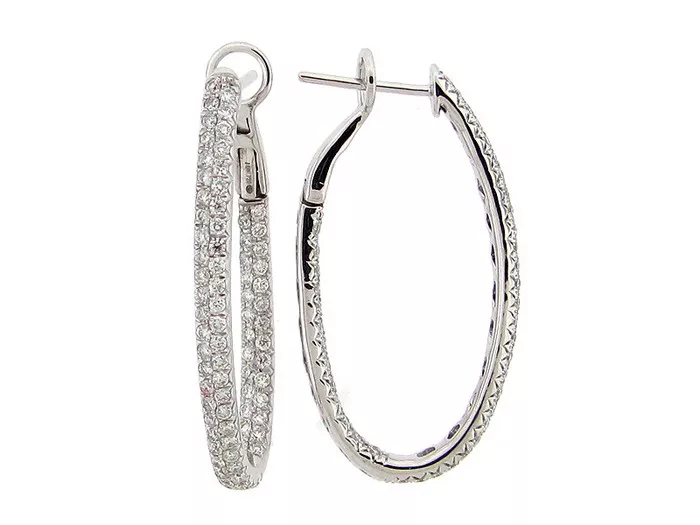Diamond earrings are often considered not just a piece of jewelry but also an investment. The allure of diamonds lies not only in their beauty but also in their perceived value retention over time. Unlike other commodities that fluctuate with economic trends, diamonds have historically been viewed as a stable store of value. However, the question remains: do diamond earrings truly hold their value?
Understanding Diamond Value
Before delving into the specifics of diamond earrings, it’s crucial to understand what determines the value of diamonds in general. Several key factors influence diamond pricing:
The 4 Cs: Diamonds are evaluated based on their cut, color, clarity, and carat weight. These factors collectively determine a diamond’s quality and consequently, its market value.
Market Demand: Like any commodity, diamond prices are affected by supply and demand dynamics in the market. Shifts in consumer preferences, economic conditions, and global events can impact diamond prices.
Certification: Diamonds that come with reputable certifications, such as those from the Gemological Institute of America (GIA), often command higher prices due to their verified quality.
Factors Affecting Value Retention in Diamond Earrings
When considering whether diamond earrings hold their value, several specific factors come into play:
1. Quality of Diamonds
The foremost determinant of a diamond’s value retention is its quality. High-quality diamonds with excellent cut, color, clarity, and significant carat weight generally hold their value better than lower-quality stones. This is because such diamonds are rarer and more desirable in the market.
2. Jewelry Design and Craftsmanship
The design and craftsmanship of the earrings can also influence their value retention. Intricately designed earrings or those crafted by renowned jewelers may have higher intrinsic value beyond the diamonds themselves. However, fashion trends can affect the desirability of specific designs over time.
3. Market Trends and Demand
The demand for diamond earrings can fluctuate based on fashion trends, cultural influences, and economic conditions. Classic designs such as solitaire studs tend to remain in demand over time, whereas trendy designs may experience more volatility in their market value.
4. Certification and Documentation
Having proper certification and documentation for the diamonds in the earrings enhances their value retention. Certificates from respected gemological laboratories provide assurance regarding the quality and authenticity of the diamonds, which can be crucial when selling or valuing diamond earrings.
5. Economic and Inflationary Pressures
Diamonds, like many luxury goods, can serve as a hedge against inflation. During periods of economic uncertainty or high inflation, tangible assets like diamonds may retain or even increase in value as investors seek alternative stores of wealth.
6. Maintenance and Care
Proper maintenance and care of diamond earrings can preserve their condition and, consequently, their value. Regular cleaning and professional inspections ensure that the diamonds remain sparkling and free from damage, which can affect their resale value.
See Also: Can Diamond Earrings Get Wet?
Historical Performance of Diamond Prices
Examining historical data provides insights into the performance of diamond prices and their value retention:
Stability: Diamonds have historically shown stability in pricing compared to more volatile commodities like stocks or currencies.
Long-term Appreciation: High-quality diamonds have demonstrated appreciation in value over the long term, driven by their rarity and enduring appeal.
Cyclical Trends: Diamond prices can experience cyclical fluctuations influenced by economic cycles and market conditions.
Challenges and Considerations
Despite their perceived value retention, diamond earrings pose several challenges as an investment:
Illiquidity: Selling diamond earrings may not be as straightforward as selling stocks or bonds due to their illiquid nature and the specialized market for diamonds.
Depreciation of Jewelry: While diamonds themselves may hold value, the jewelry settings and craftsmanship can depreciate over time, affecting overall value.
Market Dynamics: Changes in consumer preferences or advancements in synthetic diamonds could impact the market value of natural diamond earrings.
Conclusion
In conclusion, diamond earrings can hold their value well under certain conditions, primarily driven by the quality of the diamonds, market demand, and economic factors. High-quality diamonds with excellent cut, color, clarity, and certification generally stand a better chance of retaining value over time. However, like any investment, diamond earrings come with risks and considerations that potential buyers and investors must weigh carefully.
Understanding the factors influencing diamond value, staying informed about market trends, and ensuring proper maintenance are essential for maximizing the value retention of diamond earrings. Ultimately, while diamonds may not guarantee returns like financial investments, their enduring beauty and cultural significance ensure they remain coveted assets in the realm of jewelry and beyond.

